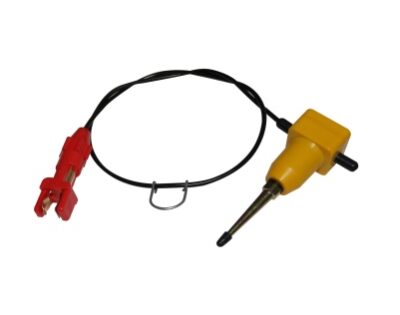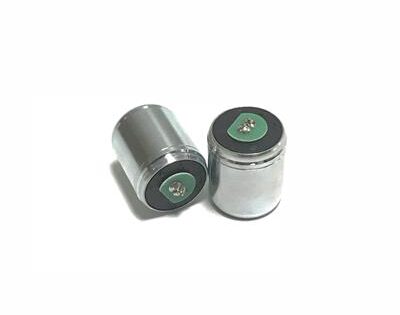Basic Information of Geophone
Q1: What is a geophone?
A geophone is a device that converts ground movement into voltage, which can be recorded and analyzed to interpret subsurface structures and monitor seismic activity.
—— Wikipedia
Q2: How does a geophone function?
Traditional geophones consist of a spring-mounted wire coil moving within the field of a case-mounted permanent magnet. When the ground moves, this motion induces an electrical signal proportional to the velocity of the movement.
Q3: Is a geophone the same as an accelerometer or seismometer?
Not exactly. While all three devices measure ground motion, they differ in design and application:
- Seismometers: Typically larger and more sensitive, capable of detecting extremely small movements across a broad frequency range, including low frequencies. They are often used for detailed seismic studies.
- Geophones: More compact and cost-effective, geophones are designed for specific applications like oil exploration and localized seismic monitoring. They are less sensitive to very low-frequency movements compared to seismometers.
- Accelerometers: These devices measure acceleration and are adept at capturing rapid movements. They are commonly found in consumer electronics for motion sensing.
For more information: you can get the detail from
II. Historical Development of Geophones
Q1: When were geophones first developed?
Geophones have been in use since the early 20th century, evolving alongside advancements in geophysical exploration techniques.
Q2: How have geophones evolved over time?
Initially, geophones were purely mechanical devices. Over time, they have incorporated electronic components, leading to improved sensitivity, broader frequency ranges, and enhanced data accuracy.
III. Technical Specifications of Geophones
Q1: What is the natural frequency of a geophone?
The natural frequency refers to the frequency at which a geophone naturally oscillates. Common values range from 1Hz to 100Hz, depending on the design and intended application.
Q2: Why is coil resistance important in geophones?
Coil resistance, typically measured in ohms, affects the geophone’s sensitivity and signal quality. Proper resistance ensures accurate conversion of ground movements into electrical signals.
Q3: What does the sensitivity of a geophone indicate?
Sensitivity, measured in volts per meter per second (V/m/s), indicates how responsive the geophone is to ground motion. Higher sensitivity allows for the detection of smaller seismic events.

IV. Types of Geophones
Q1: What are the different types of geophones?
Geophones can be categorized based on their orientation (vertical, horizontal, or triaxial) and their specific applications, such as land or marine use.
Q2: What is a triaxial geophone?
A triaxial geophone measures ground movements in three orthogonal directions (X, Y, and Z axes), providing a comprehensive understanding of seismic wave propagation.
Q3: How do marine geophones differ from land geophones?
Marine geophones, often called hydrophones, are designed to detect pressure changes in water, whereas land geophones measure ground velocity.
VI. Geophone Deployment and Data Acquisition
Q1: How are geophones deployed in the field?
Geophones are strategically placed in arrays or grids, with spacing and orientation determined by the survey’s objectives and the geological features of interest.
Q2: What is the importance of coupling in geophone deployment?
Proper coupling ensures that the geophone maintains firm contact with the ground, allowing accurate transmission of seismic waves to the sensor.
Q3: How is data collected from geophones?
Data from geophones is transmitted to a central recording system, where it is digitized and stored for subsequent processing and analysis.
Related Products:
2Hz high sensitivity geophone
2Hz High Sensitivity Geophone(P/N: ST-2A) is designed for receiving deep, low frequency and weak signals…
Low frequency geophone 4.5Hz
Low Frequency Geophone 4.5Hz(ST-4.5N) is a long coil travel version geophone, which is equivalent to SM-6 B coil 4.5hz geophone…
Omni Geophone 14Hz
Omni geophone 14Hz works at omni direction with the features of high sensitivity, stable performance and light weight…















